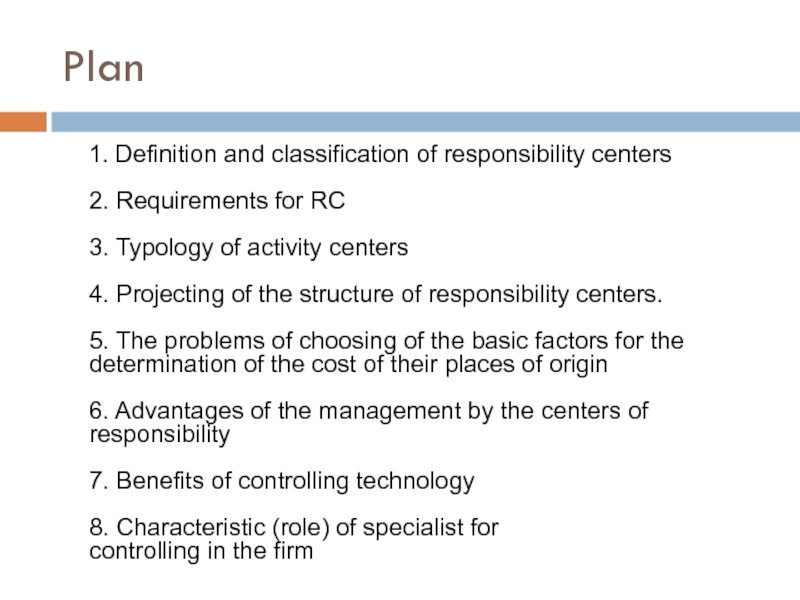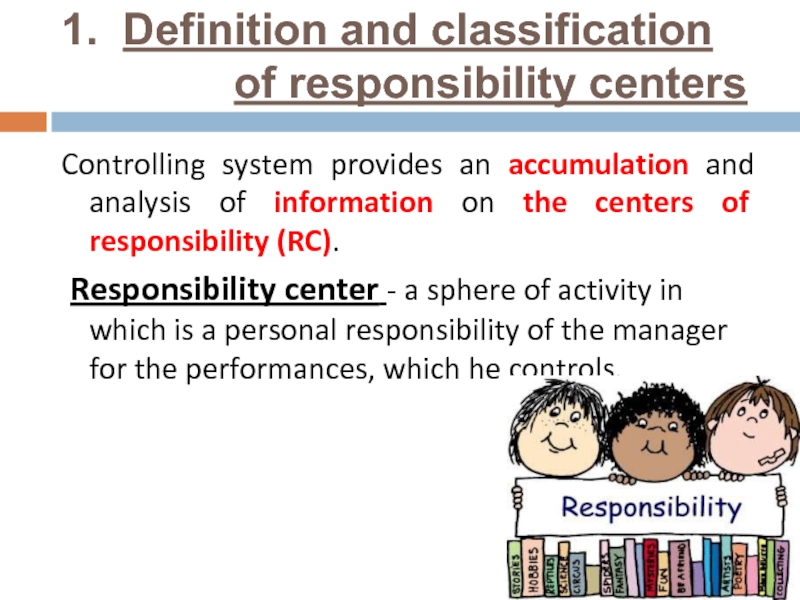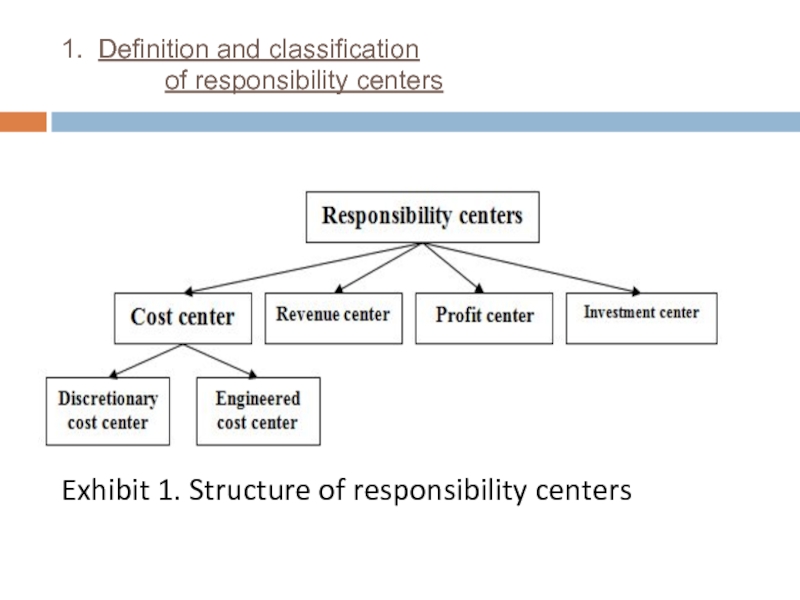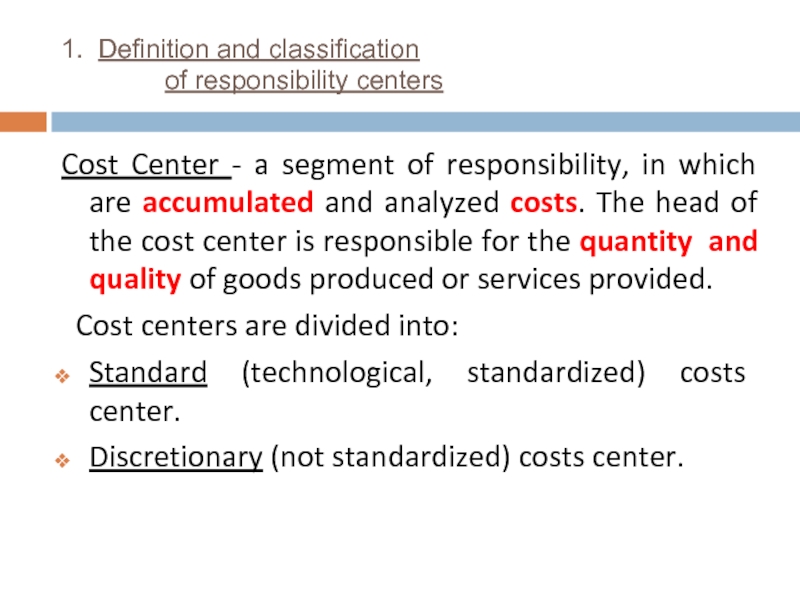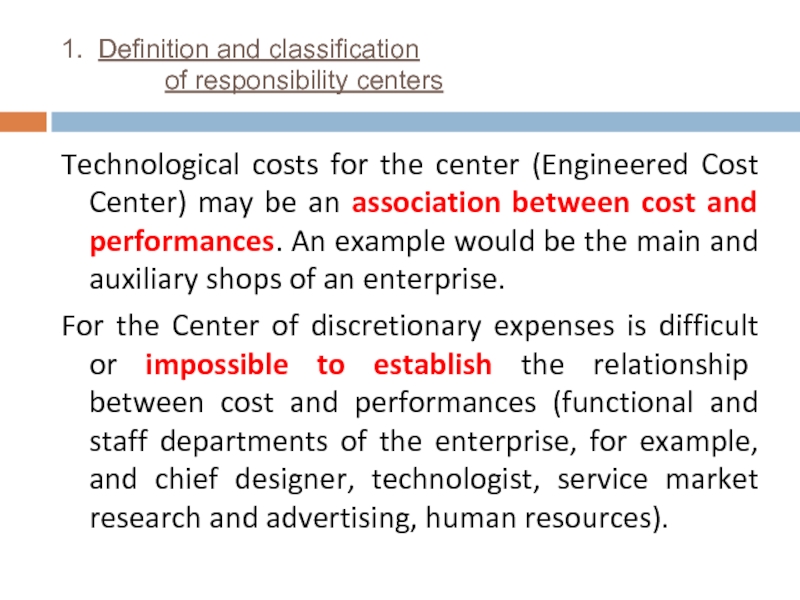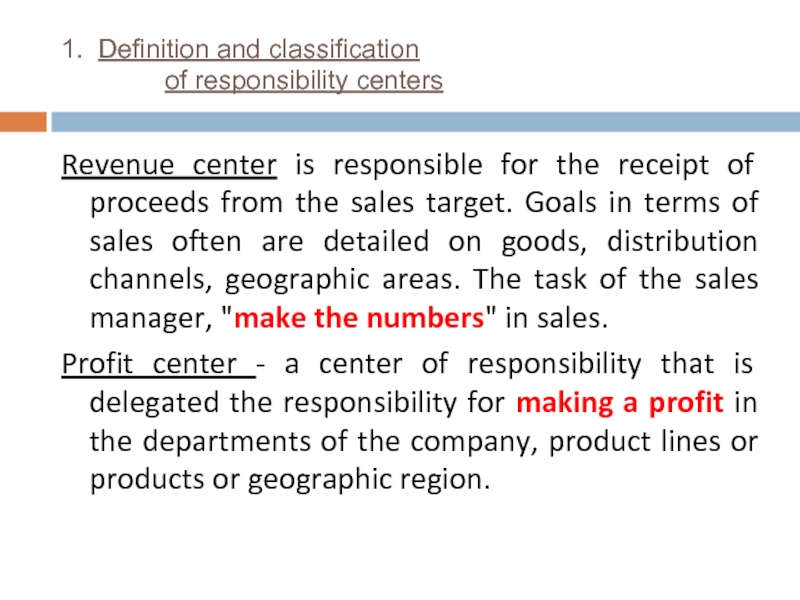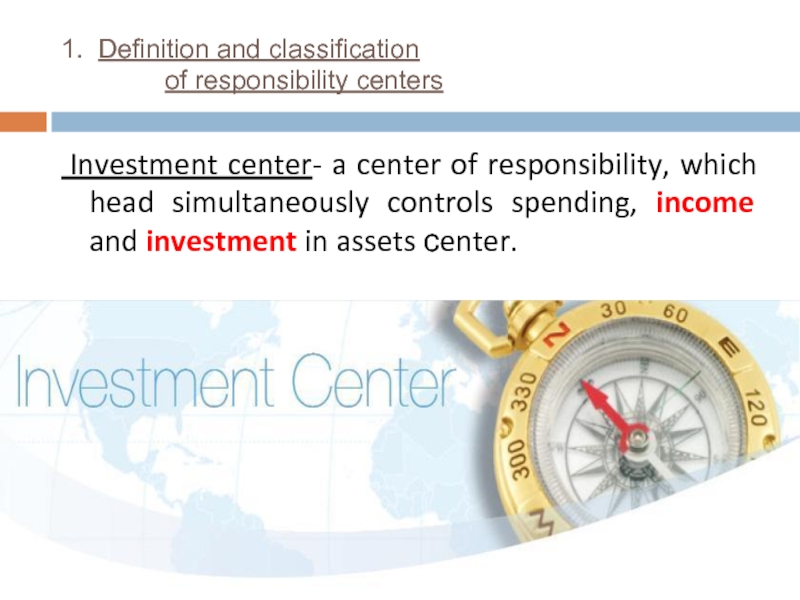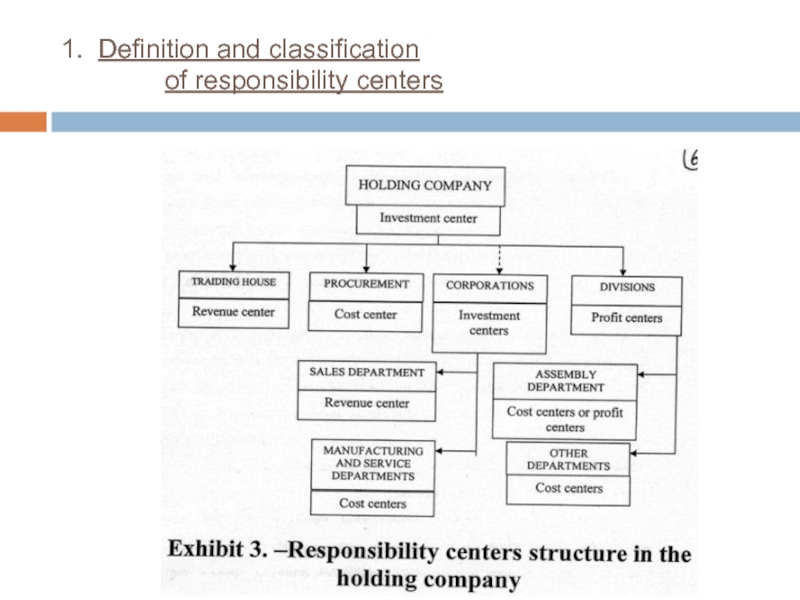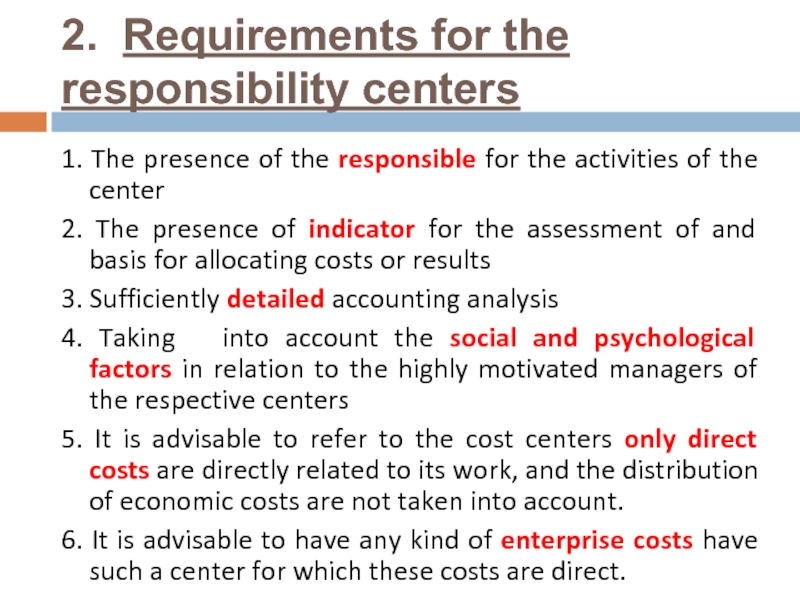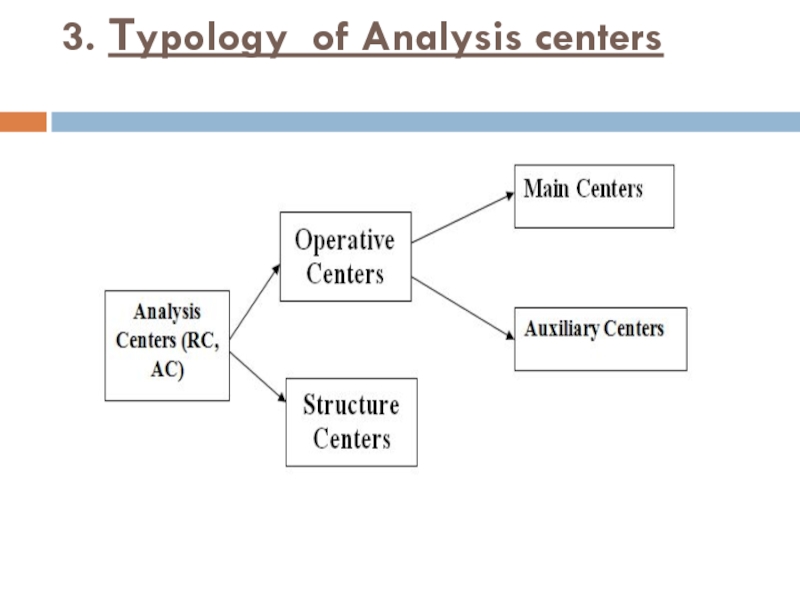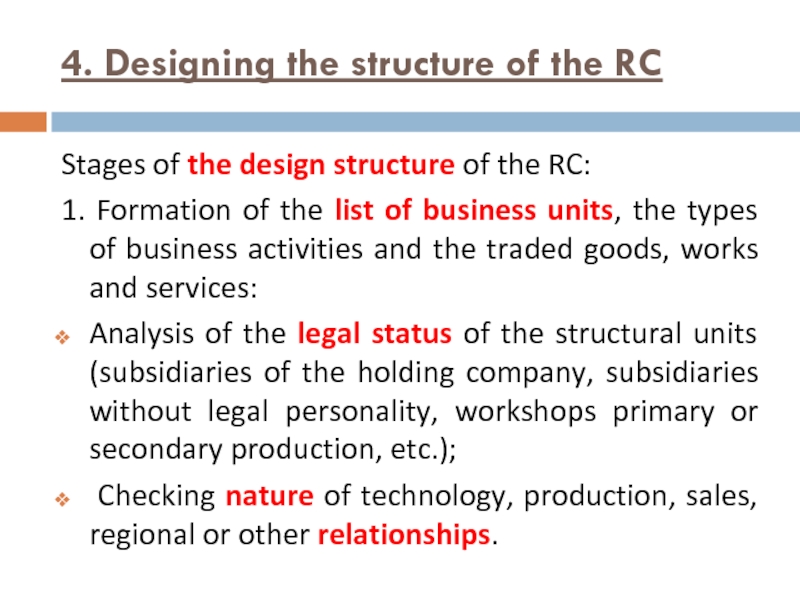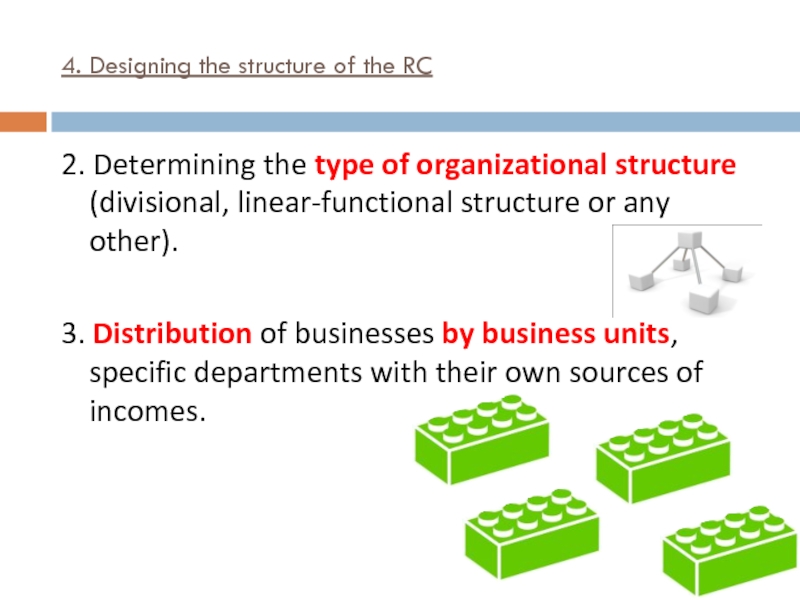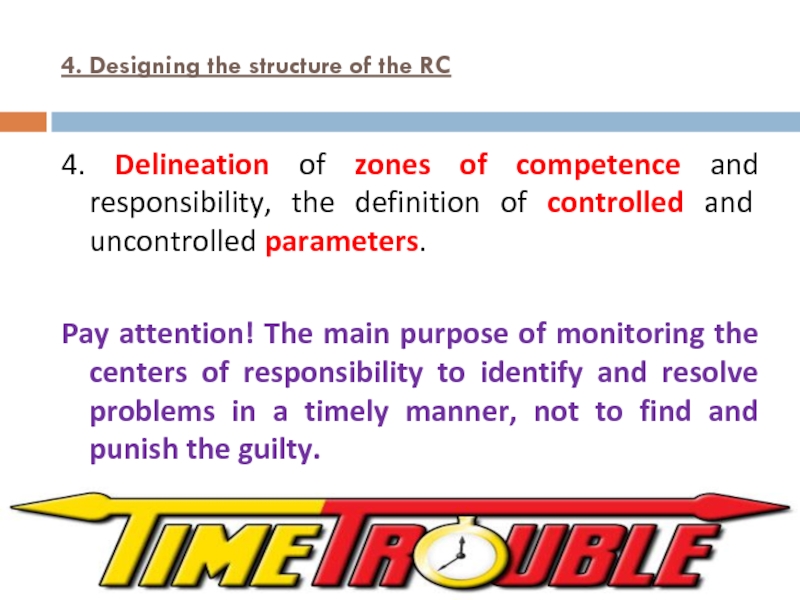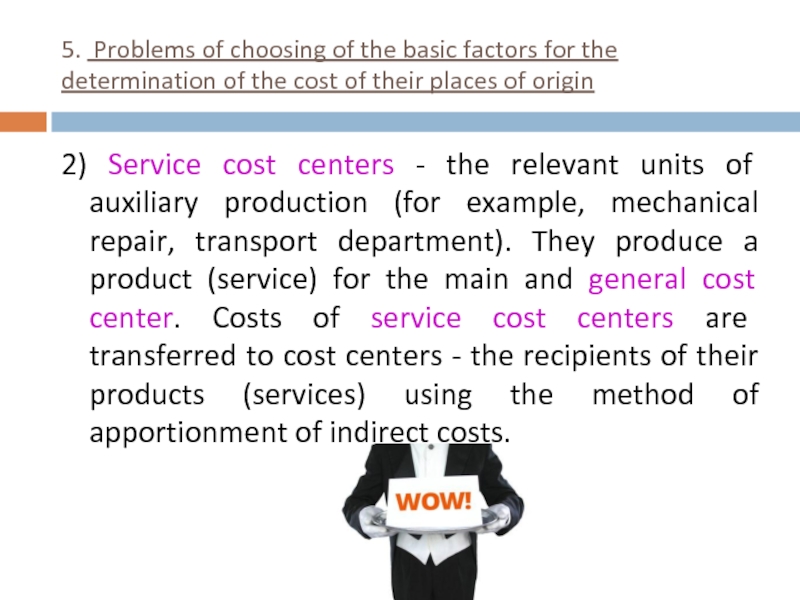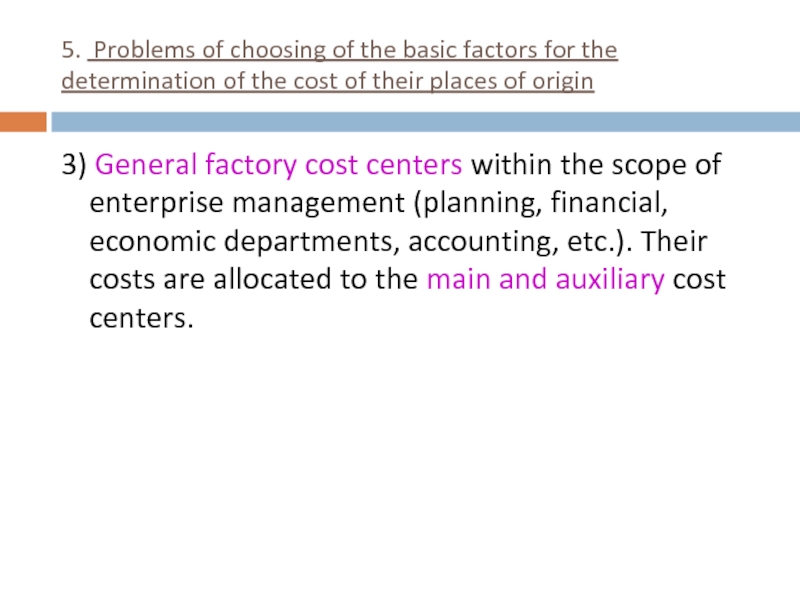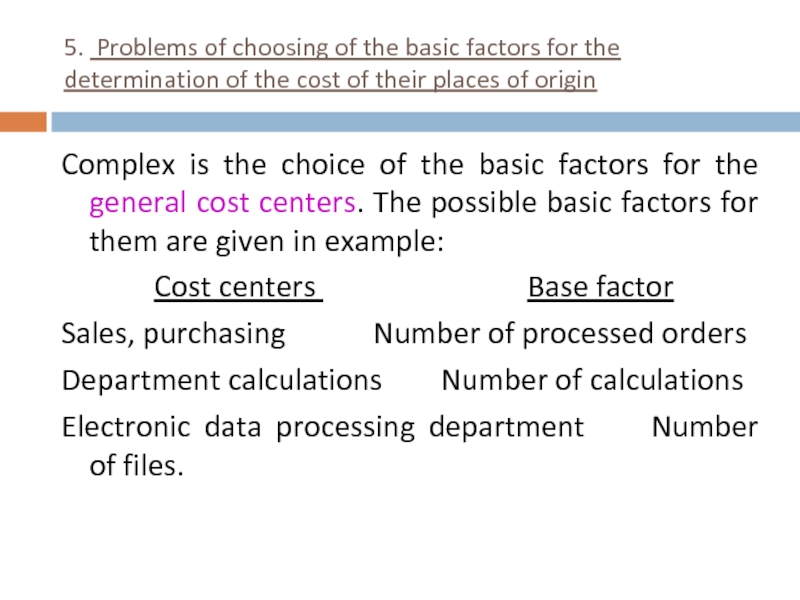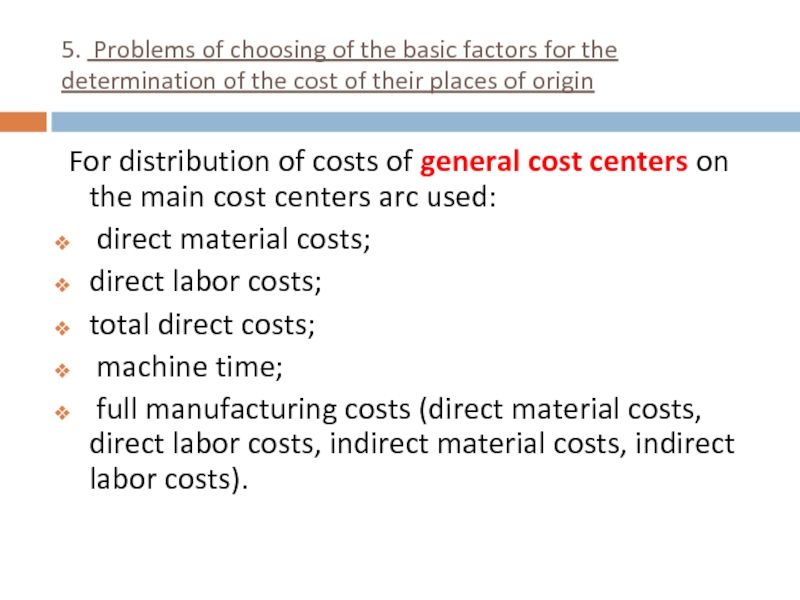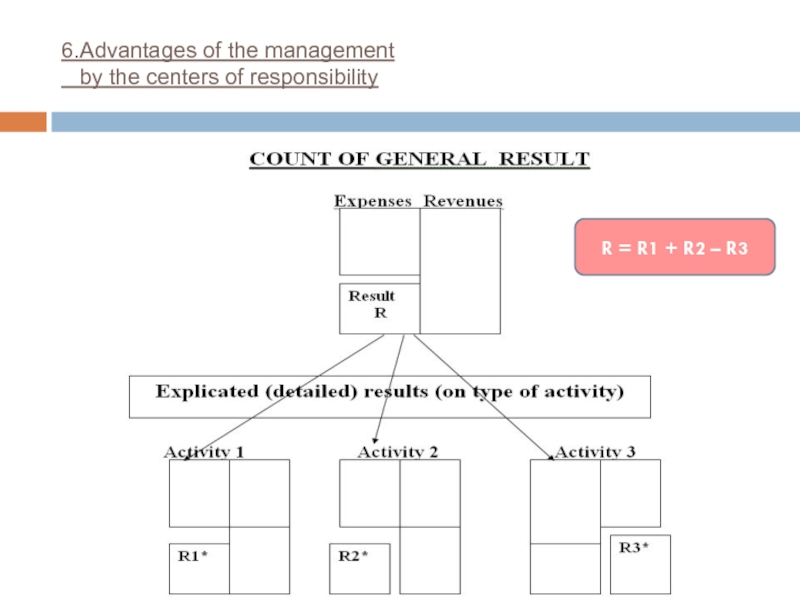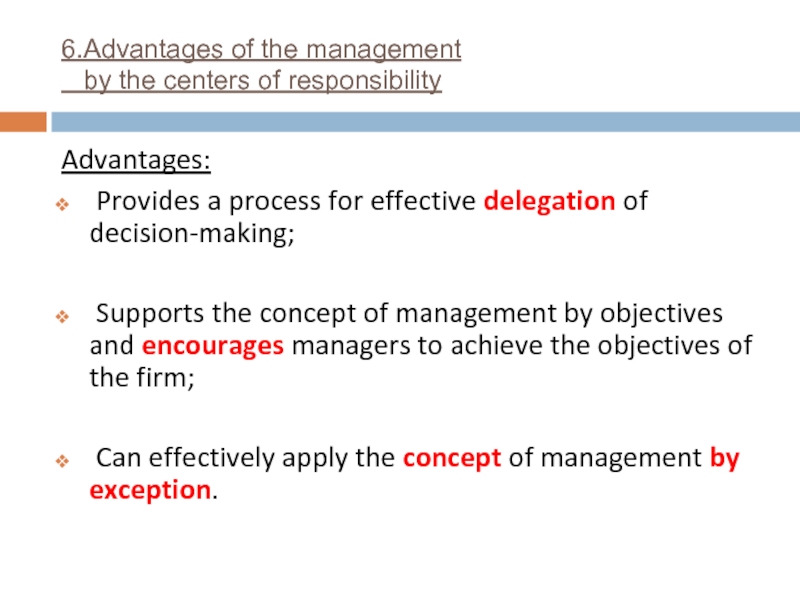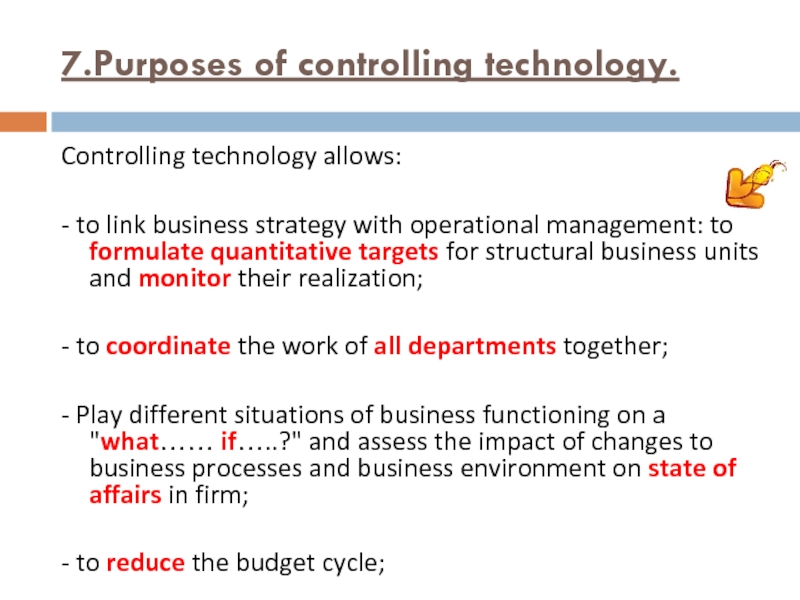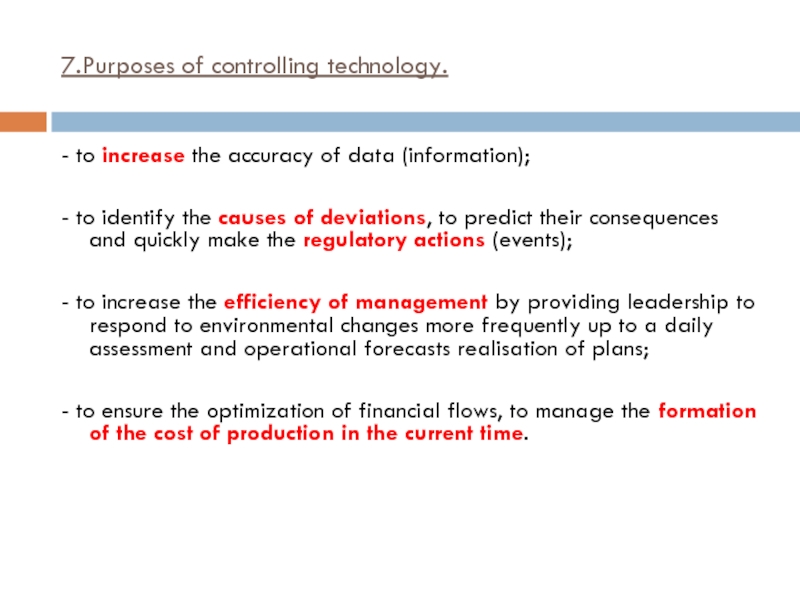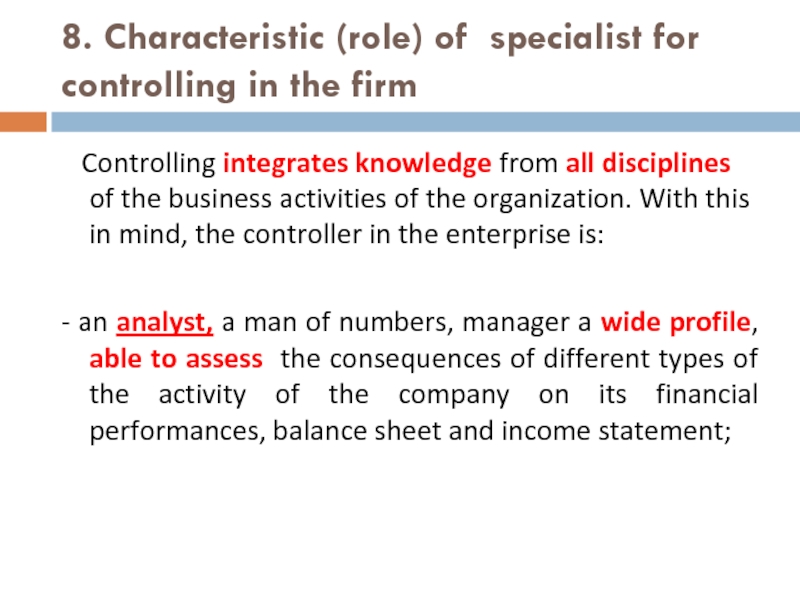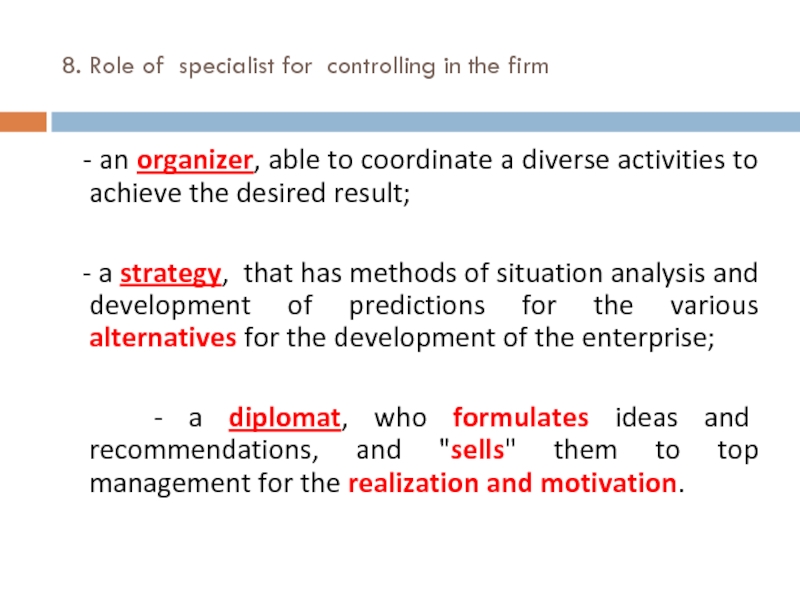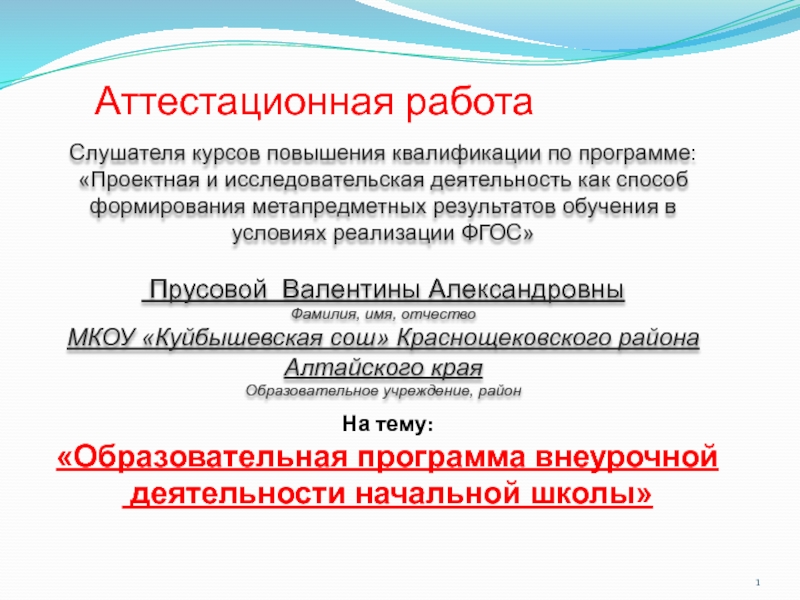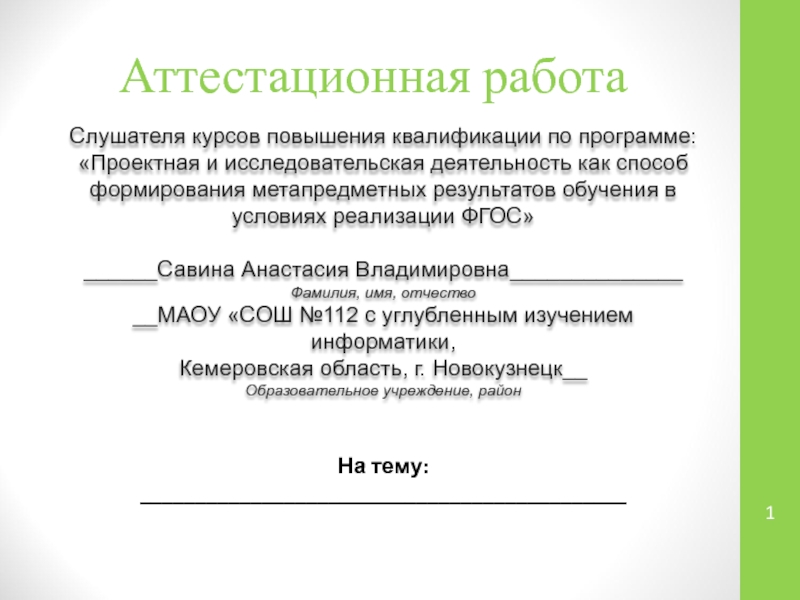- Главная
- Разное
- Дизайн
- Бизнес и предпринимательство
- Аналитика
- Образование
- Развлечения
- Красота и здоровье
- Финансы
- Государство
- Путешествия
- Спорт
- Недвижимость
- Армия
- Графика
- Культурология
- Еда и кулинария
- Лингвистика
- Английский язык
- Астрономия
- Алгебра
- Биология
- География
- Детские презентации
- Информатика
- История
- Литература
- Маркетинг
- Математика
- Медицина
- Менеджмент
- Музыка
- МХК
- Немецкий язык
- ОБЖ
- Обществознание
- Окружающий мир
- Педагогика
- Русский язык
- Технология
- Физика
- Философия
- Химия
- Шаблоны, картинки для презентаций
- Экология
- Экономика
- Юриспруденция
Lecture 2. Responsibility centers презентация
Содержание
- 1. Lecture 2. Responsibility centers
- 2. Plan 1. Definition and
- 3. 1. Definition and classification
- 4. 1. Definition and classification
- 5. 1. Definition and classification
- 6. 1. Definition and classification
- 7. 1. Definition and classification
- 8. 1. Definition and classification
- 9. 1. Definition and classification
- 10. 1. Definition and classification of responsibility centers
- 11. 2. Requirements for the responsibility centers
- 12. 3. Тypology of Analysis centers
- 13. 4. Designing the structure of the
- 14. 4. Designing the structure of the RC
- 15. 4. Designing the structure of the RC
- 16. 5. Problems of choosing of the
- 17. 5. Problems of choosing of the basic
- 18. 5. Problems of choosing of the basic
- 19. 5. Problems of choosing of the basic
- 20. 5. Problems of choosing of the basic
- 21. 6.Advantages of the management
- 22. 6.Advantages of the management by
- 23. 6.Advantages of the management by
- 24. 7.Purposes of controlling technology. Controlling
- 25. 7.Purposes of controlling technology. - to increase
- 26. 8. Characteristic (role) of specialist for
- 27. 8. Role of specialist for controlling in
Слайд 2Plan
1. Definition and classification of responsibility centers
2. Requirements
Слайд 3 1. Definition and classification
Controlling system provides an accumulation and analysis of information on the centers of responsibility (RC).
Responsibility center - a sphere of activity in which is a personal responsibility of the manager for the performances, which he controls.
Слайд 41. Definition and classification
There are four major types of responsibility centers (Exhibit 1):
1)Cost center.
a)Discretionary cost center.
b)Engineered cost centers.
2)Revenue centre.
3)Profit centre.
4)Investment centre.
Слайд 51. Definition and classification
Exhibit 1. Structure of responsibility centers
Слайд 61. Definition and classification
Cost Center - a segment of responsibility, in which are accumulated and analyzed costs. The head of the cost center is responsible for the quantity and quality of goods produced or services provided.
Cost centers are divided into:
Standard (technological, standardized) costs center.
Discretionary (not standardized) costs center.
Слайд 71. Definition and classification
Technological costs for the center (Engineered Cost Center) may be an association between cost and performances. An example would be the main and auxiliary shops of an enterprise.
For the Center of discretionary expenses is difficult or impossible to establish the relationship between cost and performances (functional and staff departments of the enterprise, for example, and chief designer, technologist, service market research and advertising, human resources).
Слайд 81. Definition and classification
Revenue center is responsible for the receipt of proceeds from the sales target. Goals in terms of sales often are detailed on goods, distribution channels, geographic areas. The task of the sales manager, "make the numbers" in sales.
Profit center - a center of responsibility that is delegated the responsibility for making a profit in the departments of the company, product lines or products or geographic region.
Слайд 91. Definition and classification
Investment center- a center of responsibility, which head simultaneously controls spending, income and investment in assets сenter.
Слайд 11
2. Requirements for the responsibility centers
1. The presence of the responsible
2. The presence of indicator for the assessment of and basis for allocating costs or results
3. Sufficiently detailed accounting analysis
4. Taking into account the social and psychological factors in relation to the highly motivated managers of the respective centers
5. It is advisable to refer to the cost centers only direct costs are directly related to its work, and the distribution of economic costs are not taken into account.
6. It is advisable to have any kind of enterprise costs have such a center for which these costs are direct.
Слайд 13
4. Designing the structure of the RC
Stages of the design structure
1. Formation of the list of business units, the types of business activities and the traded goods, works and services:
Analysis of the legal status of the structural units (subsidiaries of the holding company, subsidiaries without legal personality, workshops primary or secondary production, etc.);
Checking nature of technology, production, sales, regional or other relationships.
Слайд 144. Designing the structure of the RC
2. Determining the type of
3. Distribution of businesses by business units, specific departments with their own sources of incomes.
Слайд 154. Designing the structure of the RC
4. Delineation of zones of
Pay attention! The main purpose of monitoring the centers of responsibility to identify and resolve problems in a timely manner, not to find and punish the guilty.
Слайд 16 5. Problems of choosing of the basic factors for the determination
An important principle in the structuring of RC - the desire to provide a quantitative relationship between the level of costs and performances.
For its role in the production process arc isolated:
1) The main cost centers – represent the basic structural units of production.
Слайд 175. Problems of choosing of the basic factors for the determination
2) Service cost centers - the relevant units of auxiliary production (for example, mechanical repair, transport department). They produce a product (service) for the main and general cost center. Costs of service cost centers are transferred to cost centers - the recipients of their products (services) using the method of apportionment of indirect costs.
Слайд 185. Problems of choosing of the basic factors for the determination
3) General factory cost centers within the scope of enterprise management (planning, financial, economic departments, accounting, etc.). Their costs are allocated to the main and auxiliary cost centers.
Слайд 195. Problems of choosing of the basic factors for the determination
Complex is the choice of the basic factors for the general cost centers. The possible basic factors for them are given in example:
Cost centers Base factor
Sales, purchasing Number of processed orders
Department calculations Number of calculations
Electronic data processing department Number of files.
Слайд 205. Problems of choosing of the basic factors for the determination
For distribution of costs of general cost centers on the main cost centers arc used:
direct material costs;
direct labor costs;
total direct costs;
machine time;
full manufacturing costs (direct material costs, direct labor costs, indirect material costs, indirect labor costs).
Слайд 21
6.Advantages of the management
by the centers of responsibility
Controlling system
Слайд 236.Advantages of the management
by the centers of responsibility
Advantages:
Provides
Supports the concept of management by objectives and encourages managers to achieve the objectives of the firm;
Can effectively apply the concept of management by exception.
Слайд 24
7.Purposes of controlling technology.
Controlling technology allows:
- to link business strategy with
- to coordinate the work of all departments together;
- Play different situations of business functioning on a "what…… if…..?" and assess the impact of changes to business processes and business environment on state of affairs in firm;
- to reduce the budget cycle;
Слайд 257.Purposes of controlling technology.
- to increase the accuracy of data (information);
-
- to increase the efficiency of management by providing leadership to respond to environmental changes more frequently up to a daily assessment and operational forecasts realisation of plans;
- to ensure the optimization of financial flows, to manage the formation of the cost of production in the current time.
Слайд 26
8. Characteristic (role) of specialist for controlling in the firm
- an analyst, a man of numbers, manager a wide profile, able to assess the consequences of different types of the activity of the company on its financial performances, balance sheet and income statement;
Слайд 278. Role of specialist for controlling in the firm
-
- a strategy, that has methods of situation analysis and development of predictions for the various alternatives for the development of the enterprise;
- a diplomat, who formulates ideas and recommendations, and "sells" them to top management for the realization and motivation.

